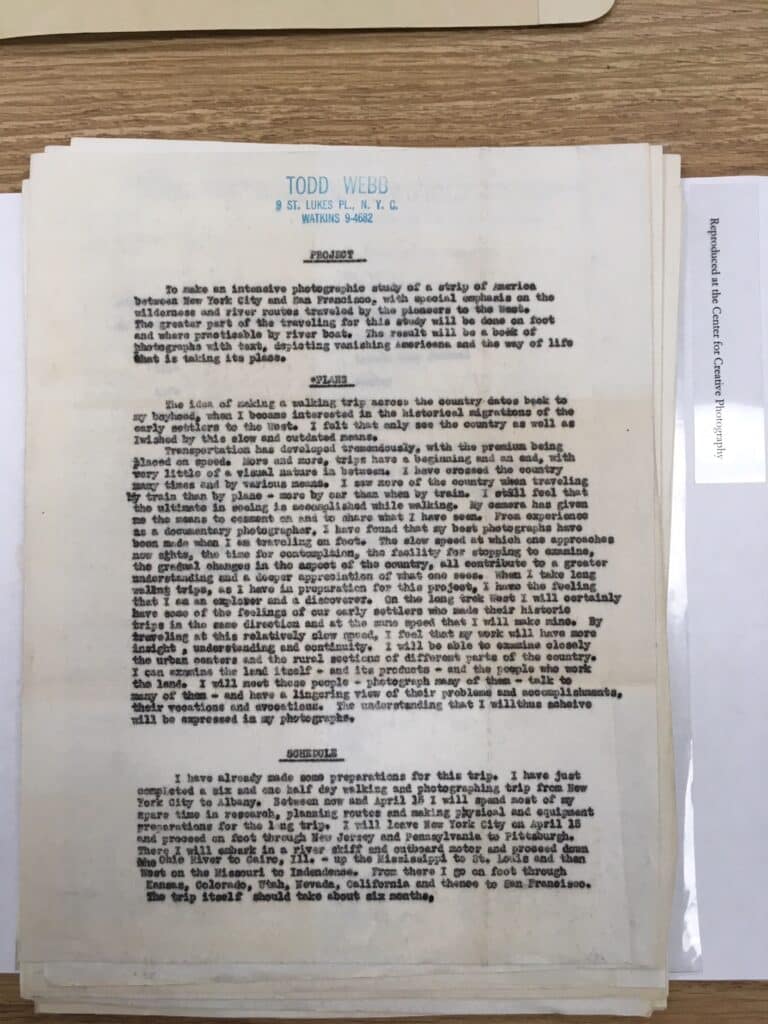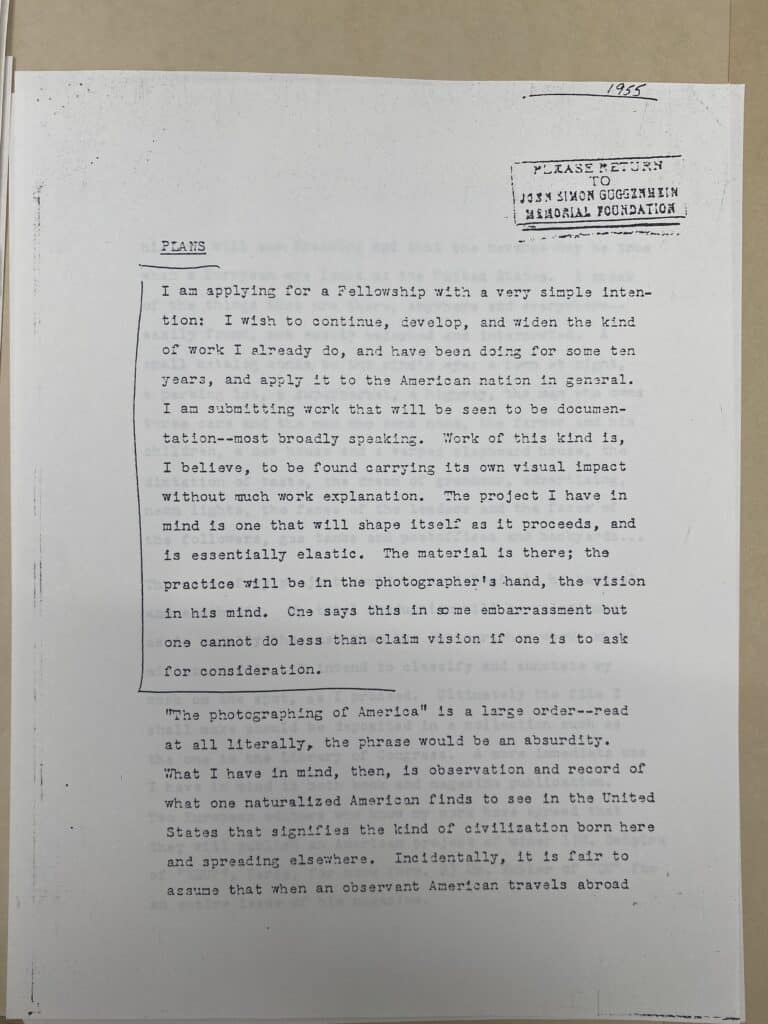What can a damaged desk chair, an old typewriter, and a well-used compass reveal about a master photographer? As it turns out, plenty. While studying Robert Frank’s and Todd Webb’s pictures can tell us much about their vision and values, some things can only be known by… looking at the junk they held onto for decades. Inspired by a new exhibition of Frank and Todd’s work at the Museum of Fine Arts, Houston, a look at the surprising stories that objects tell.
Robert Frank’s Desk Chair
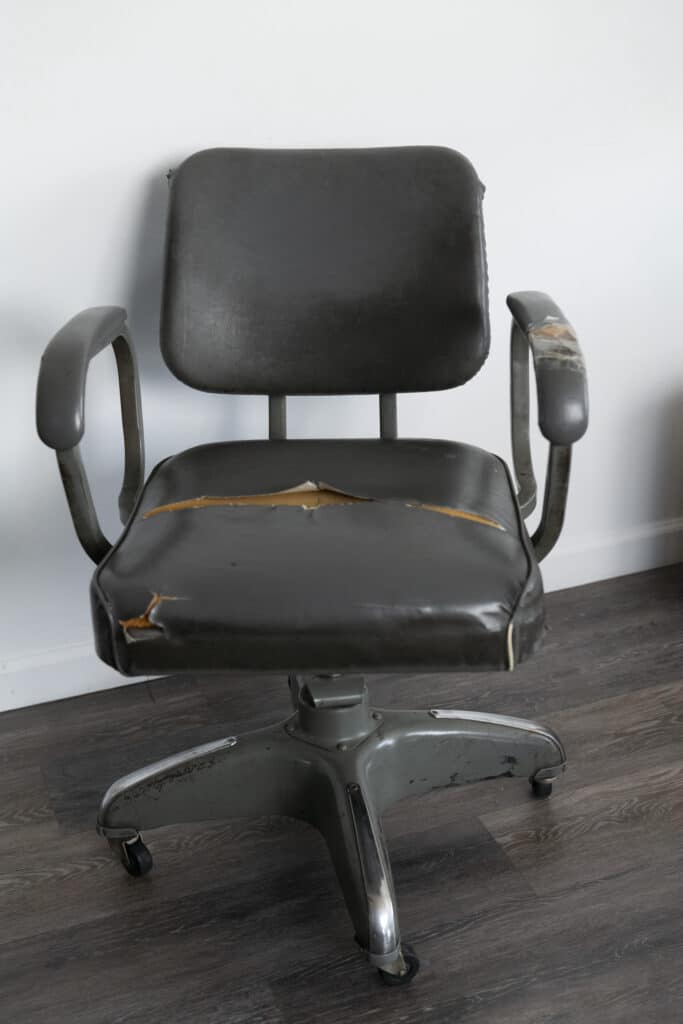
Frank had this chair at his Bleecker Street apartment for years. He sat in it when he was editing, writing, and creating. Did the legendary photographer not have enough cash on-hand to spring for a new chair that wasn’t literally falling apart? Of course he did. Did he want to waste an hour shopping for seating when he could use that time to make art? He did not. This chair, with it’s deeply split seam, is a testament to Frank’s deeply held values: art first, art second, art third.
Skulls, Santa Fe, and Georgia O’Keeffe
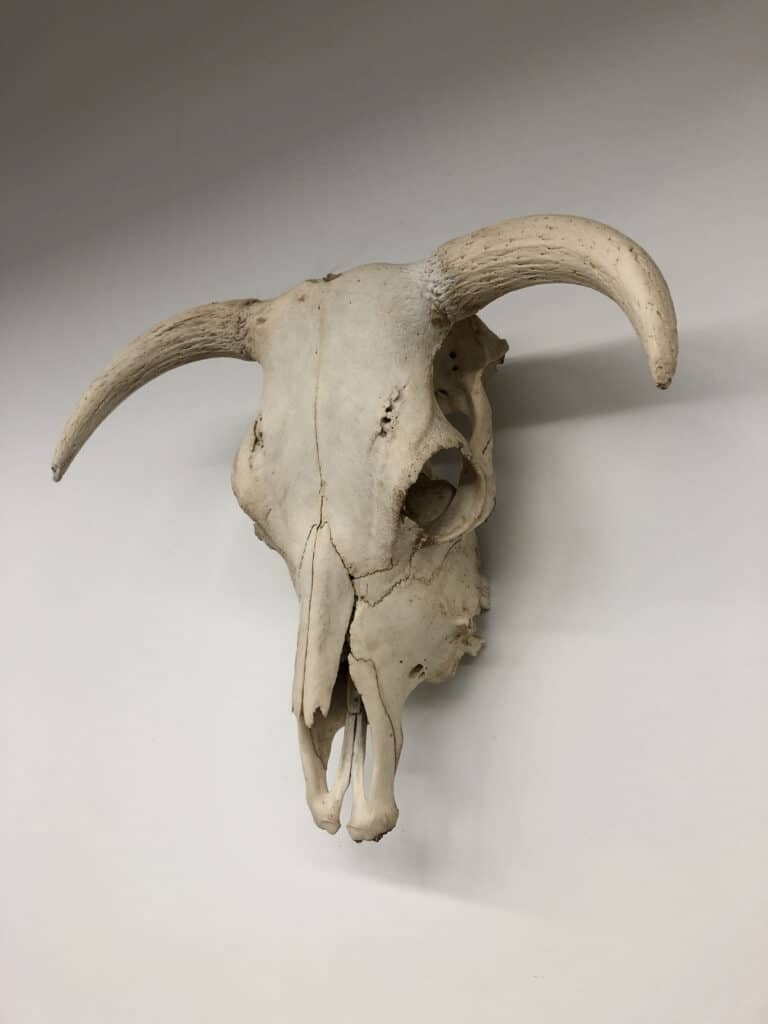
Not long after Webb moved to New York City in 1946, Alfred Stieglitz, then one of the photo world’s biggest names, took the new photographer under his wing. This was how Webb came to know Stieglitz’s wife, an up-and-coming artist named Georgia O’Keeffe. O’Keeffe and Webb would become close friends: Not only did she pen a recommendation for Webb’s Guggenheim application (see below), but toward the end of his 1955 trip, he spent three weeks with her at her home in the village of Abiquiu, New Mexico, where she’d settled six years earlier.
And in 1961, Webb and his wife Lucille actually moved from New York City to Santa Fe to be nearer to O’Keeffe. At some point, O’Keeffe gave Webb this cow’s skull, an object that she painted again and again over the course of her career. Betsy Evans Hunt, Webb’s friend and “surrogate daughter” (her words) who became the executor of his estate and the executive director of the Todd Webb Archive, says the skull speaks to Webb’s time in the Southwest and to his deep (but platonic) relationship with O’Keeffe. It was Webb, Evans Hunt told me, “who helped Georgia buy her first 35 millimeter camera and showed her how to use it. They would go out and photograph together and then Todd would process and print her pictures.” Along the way, Webb made wonderful photos of the iconic painter. “Todd had a great admiration for Georgia’s independent spirit and also her talent,” Evans Hunt says. “They just got each other.”
Todd Webb’s Typewriter
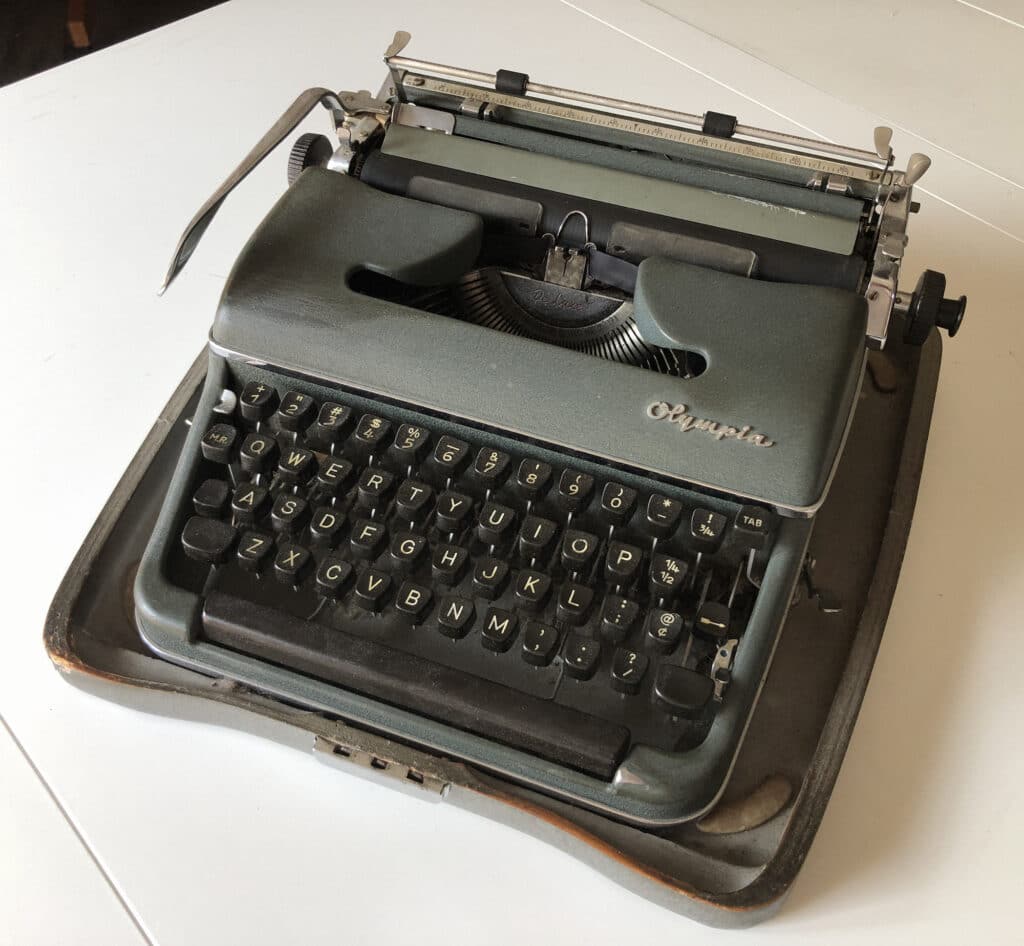
Todd Webb was a brilliant photographer but he was also an amusing and tireless writer. It was something he clearly enjoyed doing: For a full 50 years—from 1946 to 1996—Webb wrote in his journal, typing, often daily, on old-fashioned onion-skin paper. In the end, he filled 3,033 pages. Many of those entries were typed on this 1956 Olympia Werke AG manual typewriter, made in West Germany, and likely purchased by Webb at a shop on West Street in downtown New York City.
Today, Evans Hunt has the typewriter, along with many other objects owned by Webb and his wife Lucille. But the Olympia stands out because Webb’s journal offers so many rich insights about the photographer over the course of his photographic career. The journal was important to Webb, says Sam Walker, the archive’s director, because “It was Todd deciding that as a photographer, he was going to take the task of being an observer seriously. It was an extension of his photographic practice, which was rigorous and deliberate.”
With detail and honesty, Webb chronicles his own artistic challenges and successes, as well as his quotidian comings and goings (“Had dinner with Ferd at the Automat and I came home at nine o’clock. Have a couple of prints to make”). He also writes about his photographer friends who just happened to be some of the biggest names in photographic history: everyone from Helen Levitt and Berenice Abbott to FSA photographers John Vachon and Russell Lee. And he details his exchanges with Gordon Parks (who once lent Webb his Rollei), Henri Cartier-Bresson, and Dorothea Lange. At some points, Evans Hunt says, the journal can get “a little salty” (as when he takes a dig at various New York photographers for as being too full of themselves) and “a little spicy” (when he talks about his dating life).
Here’s a taste of Webb’s writing, from March, 1946: “Made a portrait of [Alfred] Stieglitz today. . . While we were talking about [Ansel] Adams he said I had something that Ansel didn’t have in his photographs. I didn’t have the nerve to ask him what but he told me anyway. He said, ‘Your photographs have tenderness.’”
An 88-Word Review of The Americans
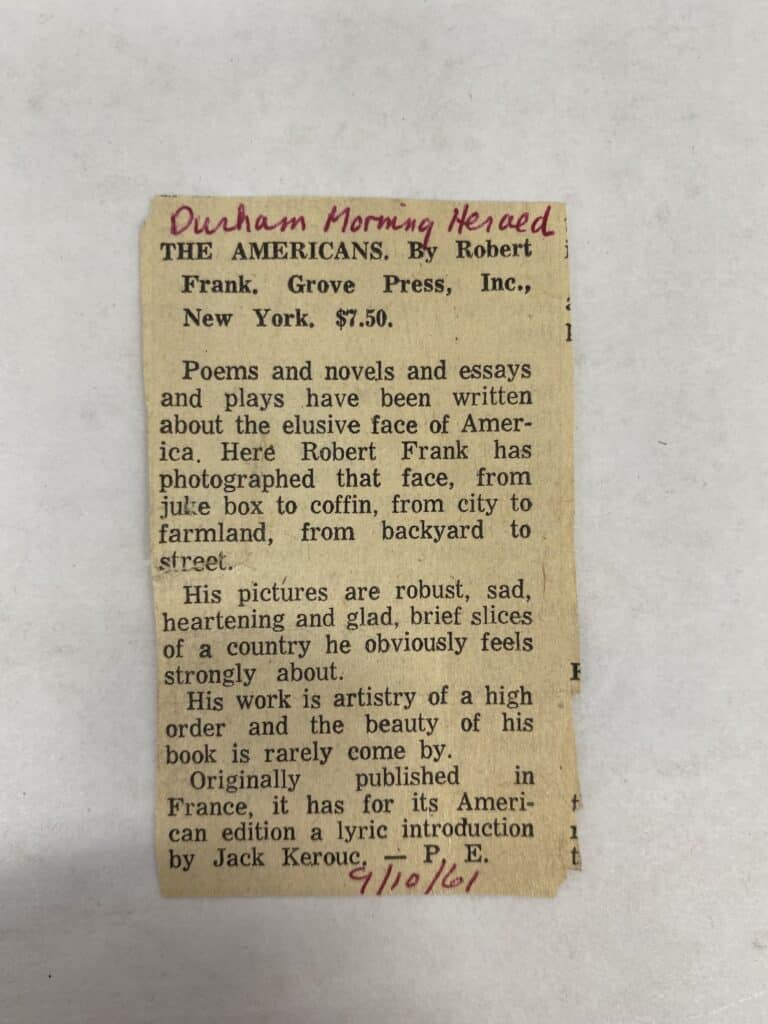
As has been well documented, when The Americans was published in the United States in 1959, it was roundly trashed. (One famously misguided review from Popular Photography slammed perhaps the greatest photo book of all time for its “blur, grain, muddy exposures, drunken horizons, and general sloppiness.”)
When Lisa Volpe, curator of new exhibit, “Robert Frank and Todd Webb: Across America, 1955,” was digging through the archives at the June Leaf and Robert Frank Foundation, she found none of the (many) negative newspaper reviews and magazine hit-jobs in the great photographer’s files, but she did discover this 88-word review from the Durham Morning Herald in North Carolina, which was published in the small paper more than a year after the book came out.
It read, in part: “His pictures are robust, sad, heartening and glad, brief slices of a country he obviously feels strongly about.” Volpe was surprised and delighted by this find. “Who knows how he got it,” she told me, “but he kept this teeny, tiny critique of the book and that, I think, tells you that he recognized when somebody got it right.”
Webb’s Old Compass
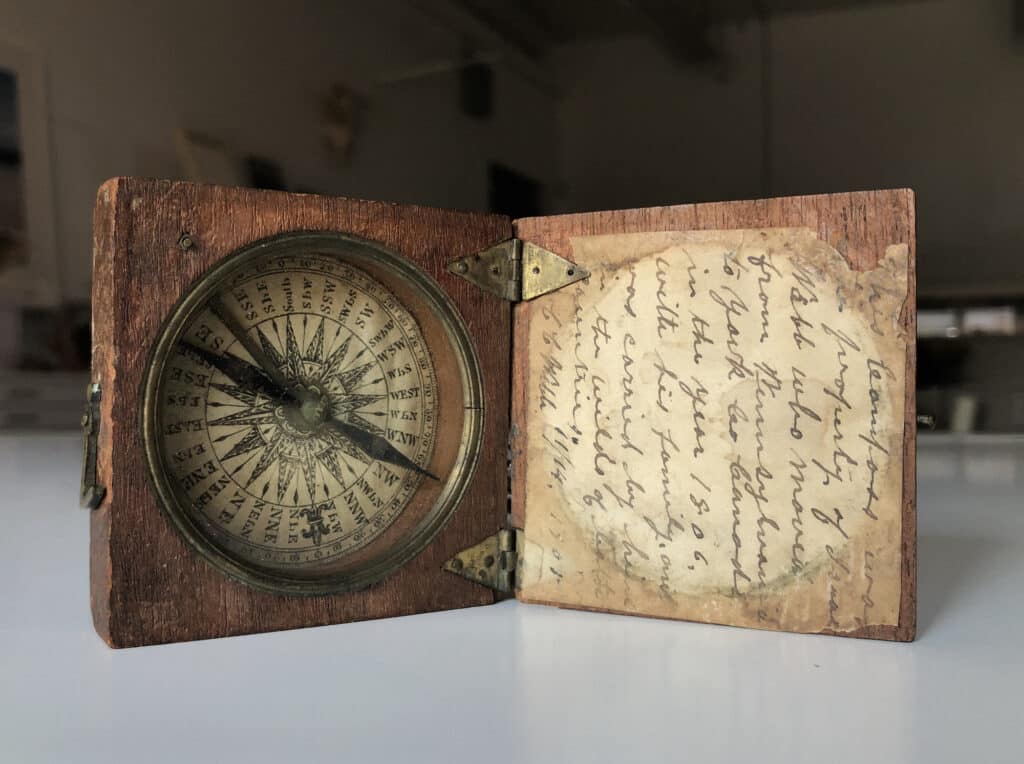
This antique compass, among Webb’s most-treasured family heirlooms, was owned by one of his Quaker ancestors who, in 1806, fled from Pennsylvania to the middle of Canada to avoid persecution. Evans Hunt believes that Webb brought it with him on his 1955 journey across America.
Whereas Robert Frank took great pleasure in the serendipity of the road—getting lost was part of his process—Webb planned his route in exacting detail. Directions mattered and losing one’s way was not part of the program. In fact, Webb, meticulous with his planning, based his route on the historical pioneer diaries he’d studied. “He knew where he was going to stay,” says Evans Hunt, “where he was going to have mail sent, and how long it would take him to walk from one place to the next.”
Webb’s approach to making pictures—slow, deliberate, thoughtful—was similar to his approach to travel, and the compass is symbolic of that. It’s also worth noting, Walker says, that the year after Webb and Frank explored America, construction on the country’s massive interstate highway system started, and with it came the beginning of the end of regionalism. Those highways also made it harder to get lost.
Dueling Applications
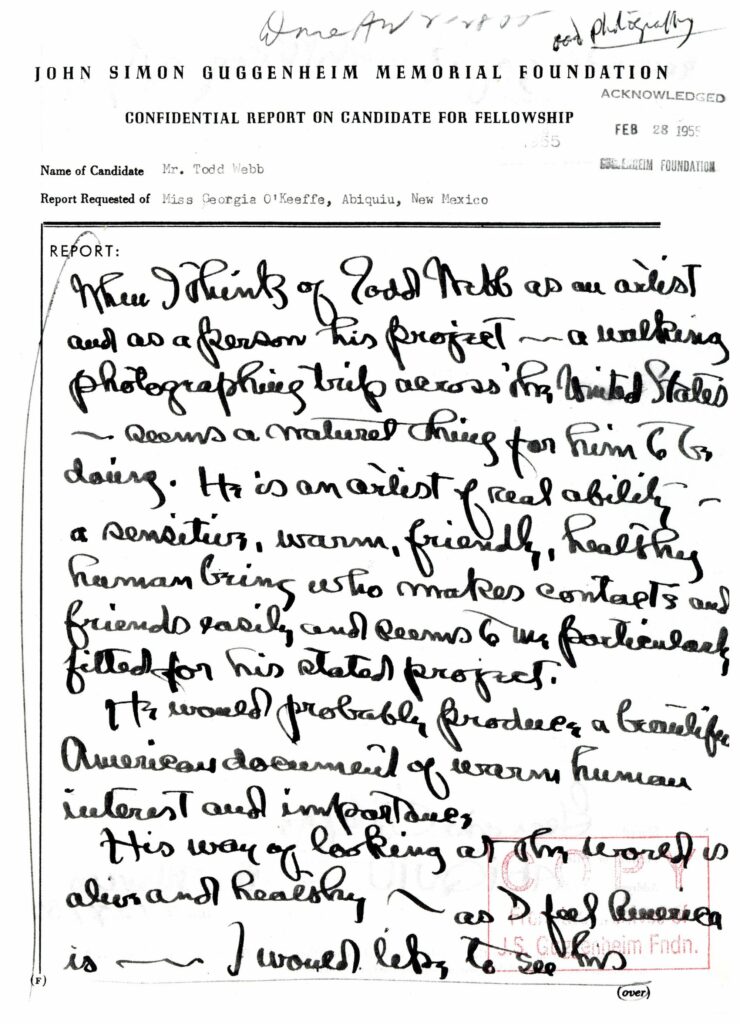
Whereas Robert Frank’s application for the Guggenheim fellowship consisted of two scant double-spaced pages of very minimal description (“I wish to continue, develop, and widen the kind of work I already do…”), Todd Webb’s six, single-spaced, typed pages represented a detailed, thorough, and passionate plan for his project. As Volpe describes it, Webb includes “his schedule, itinerary of stops, a full-page description of his photographic accomplishments, and a detailed budget.”
Yes, Webb was nearly 50 (compared to Frank, who was just 29), but as Volpe writes in the catalog accompanying the exhibit, his application was “indicative of his careful and steady character.” Both applications featured five-star references: For Webb, Walker Evans, Georgia O’Keeffe, and Edward Steichen lined up; for Frank, legendary Harper’s Bazaar art director Alexey Brodovitch, Vogue’s Alexander Lieberman, and a double-dipping Walker Evans.

